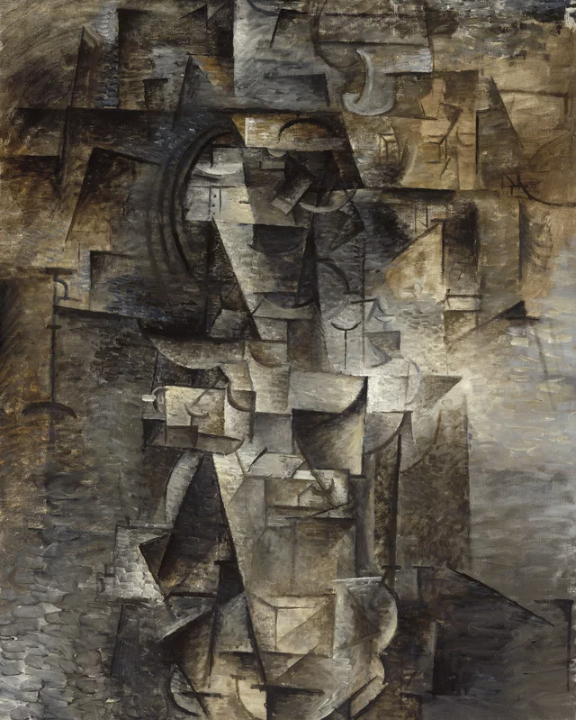Art School: Reimagining the Figure in Modern European Art
Welcome to the very first lesson in Art School! I fell in love with art history when my best friend in high school suggested I take AP Art History. Who knew it would change the trajectory of my life! I had the most incredible teacher (shout out to Dr. Coad at Hamilton High in Los Angeles!) who was so encouraging and kind. He opened my eyes to all of the ways art encompasses the social, economical, and historical events of the time, and ignited a fire in me to explore the world through the lens of art.
As a graduate student in Boston, I worked as a gallery lecturer at the Museum of Fine Arts, specializing in modern and contemporary art. My soul came alive anytime I was able to share my knowledge with visitors, inviting them into deep conversations around the work on display. With Art School, I am inviting all of you into this space to explore key themes in modern and contemporary art practices, and sharing all of my knowledge when it comes to painting, drawing, and running a successful art based business.
Our first topic explores the ways in which Modern European artists such as Pablo Picasso began to explore various ways of approaching and re-imagining the human figure in art. How did Picasso move from work like Fernande Olivier to his trademark Cubist style seen in his 1910 Portrait of a Woman? And more importantly, why?
Pablo Picasso, Fernande Olivier, 1905-06, Oil on Canvas
Pablo Picasso, Portrait of a Woman, 1910, Oil on Canvas
In 1904, Pablo Picasso moved from Spain to Paris where he soon settled in a studio in the artist hub of Montmartre (the dream!). Not long after, he met Fernande Olivier, an artist’s model who would become his lover and muse for the next six years (yes, he had many of these). Picasso is a pioneer of modern art, and while he is known for his signature Cubist approach, he was incredibly skilled as a traditional painter, as demonstrated by this 1906 painting.
Only a few short years later, Picasso created his 1910 Portrait of a Woman. Cubism, the groundbreaking style invented by Picasso and Georges Braque, created a new and ambiguous relationship between three-dimensional forms and the flat two-dimensional surface of the canvas. In Cubist work, objects are analyzed, broken up and reassembled in an abstracted form. Instead of depicting objects from just one viewpoint, they are depicted from multiple viewpoints at once to represent the subject in a greater context. Imagine walking around an object like a sculpture, analyzing every angle and viewpoint, and compiling all of those into one flat image.
“There is no abstract art. You must always start with something. Afterwards you can remove all trace of reality. There’s no danger then, anyways, because the idea of the object will have left an indelible mark.” -Picasso
So, how did he get from such a traditional point A to revolutionary point B? We may take for granted this leap now, with so many radical approaches to art existing in our everyday lives, but in the early 1900s, this work was controversial and a huge shift in the way we look at and think about art. Put yourself in the shoes of Picasso and his contemporary viewers - what does this work say about the time and context in which it was created? What was going on historically, socially, politically, economically? Art can be a powerful tool in telling us about the world we live in.
On that note, the early 20th century was still a high time of colonialism. Non-western people and the objects they were making were put on display for western audiences. The art from the colonies was seen as non-art, or “primitive”. European artists like Picasso had become dissatisfied with the classic realism that was so pervasive at that time, turning to the art of the colonies as inspiration, specifically pieces from Africa. They saw these new representations as exciting and challenging, opening up new doors of artistic understanding. This undoubtedly had a great influence on Picasso and his contemporaries.
Caption: Pablo Picasso, Head of a Woman, 1909, Bronze
One of my favorite works by Picasso is his 1909 bronze sculpture, Head of a Woman. This is again a portrait of his early muse, Fernande Olivier, and is generally considered to be the first Cubist sculpture. If Cubism was about exploring three-dimensional objects in a two-dimensional plane like a canvas, what happens when you apply those ideas to a sculpture?
Cubist sculpture developed alongside Cubist painting, reducing objects into components of planes and geometric shapes. While the sculpture may be less abstracted than the works on paper or canvas, the tension between the geometric planes and the more organic, natural form of the head results in an incredibly moving portrait.
Picasso was quite a prolific artist, so there is a good chance that you can experience his work in person if you live near or visit an art museum. If you are interested in learning about more artists that were reimagining the human figure during this time, I invite you to look into the work of Alberto Giacometti, Jacques Lipchitz, Oskar Kokoschka and Henri Matisse.
Thanks for attending our first lesson in Art School! I hope you enjoyed a brief introduction to how artists were re-imagining the figure in Modern European art.
For more art school lessons and inspiration, sign up for our newsletter here!



